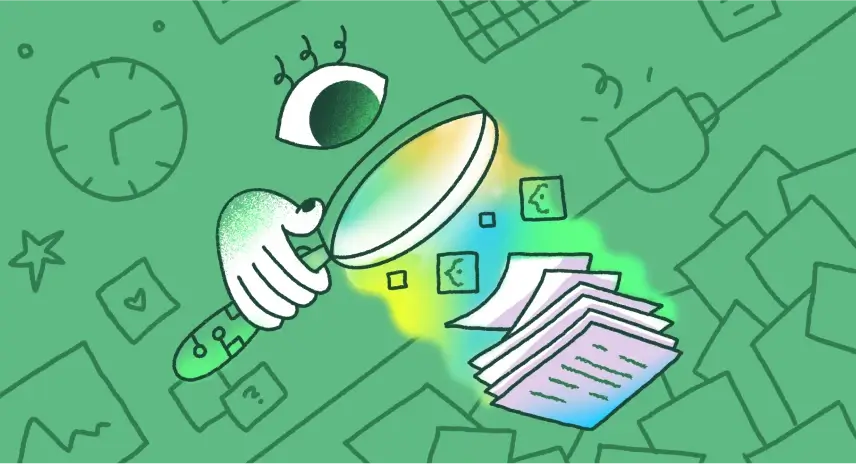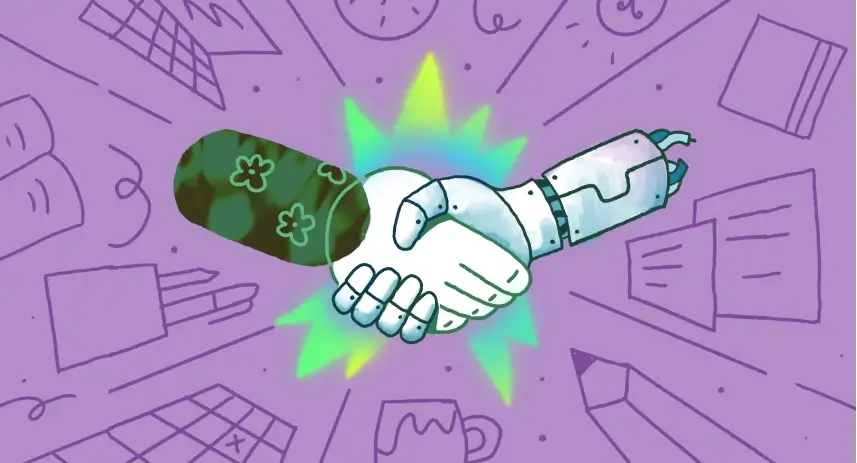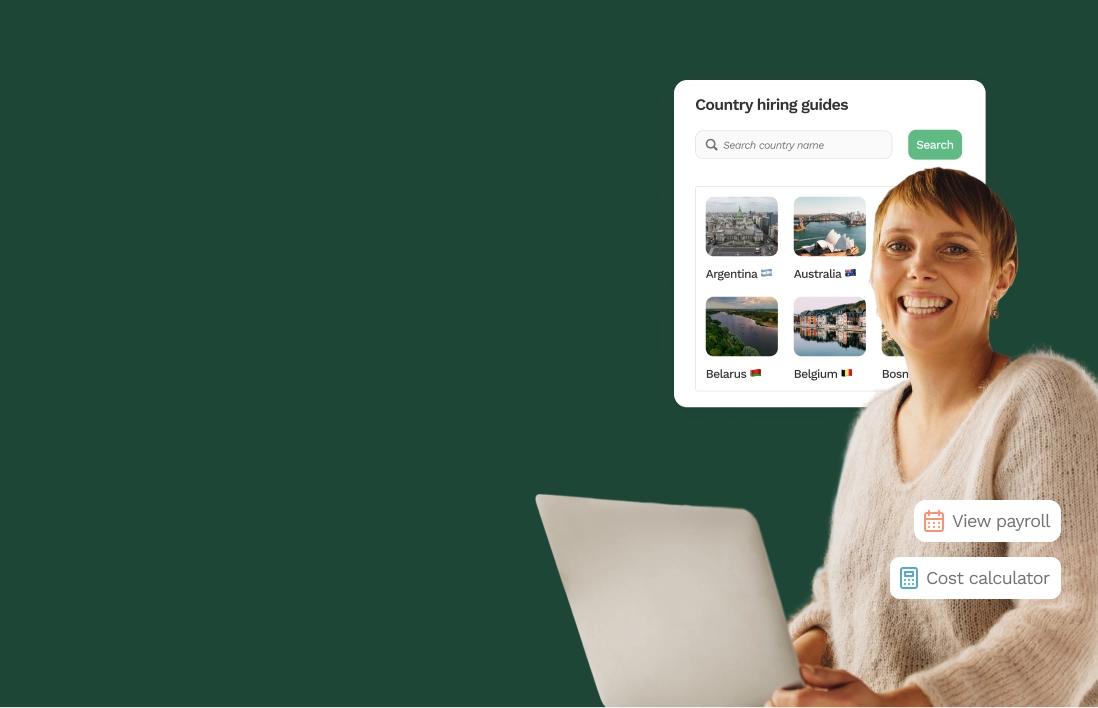It’s 2010 and you’ve just joined a fast-growing startup as the new Head of HR. Your mission? Scale hiring, fast.
But your talent acquisition (TA) team is already stretched thin. They’re manually screening resumes, juggling interview schedules, and chasing down feedback. Everything feels slow and inefficient. And while the company’s ambitions are global, your sourcing efforts feel frustratingly local. The more you grow, the more you realize some processes are harder to scale than others.
Today, hiring looks different than it did a decade ago. With the incorporation of AI and automation, hiring is faster, more intensive, and increasingly global. With a growing market size—the AI recruitment industry is projected to reach $1.12 billion by 2030 at a compound annual growth rate (CAGR) of 6.78%—it’s clear that AI is valued for its speed and scalability.
However, it also introduces new challenges around fairness, transparency, and trust. In this article, we’ll explore both the benefits and the growing pains of AI in your talent acquisition processes, helping you make informed decisions about when, where, and how to integrate AI into your talent acquisition strategy with confidence.
Key benefits of AI and automation for TA teams
AI and automation are transforming the recruitment process by making hiring faster, smarter, and more efficient. It can be a valuable asset for empowering talent acquisition (TA) teams. However, if you’re introducing AI to your teams for the first time, it’s important to approach it thoughtfully. Without careful planning, you may encounter friction with your existing tools, workflows, and hiring standards. Below, we explore the top use cases for AI in recruitment and key considerations for a smoother implementation.
- Speed and scale: Tasks like sourcing, screening, and scheduling that once took days can now be completed in minutes. According to this 2023 research, 55% of hiring professionals report faster screening and 42% report reduced time-to-hire.
Key consideration: As with most things, speed can sacrifice quality if not monitored. Automating too quickly without proper oversight can lead to missed red flags or poor candidate experiences. Be sure to monitor the rollout of new tools—and that they still align with and support your hiring standards.
- Data-driven decisions: AI helps shift hiring from gut instinct to evidence-based decisions, improving skills matching and cultural fit assessments. How? AI models trained on historical hiring data can identify patterns in successful hires, surfacing candidates whose skills, experience, and behavioral traits align closely with organizational fit.
Key consideration: AI is only as good as the data it learns from. If historical data reflects biased or inconsistent hiring practices, AI may reinforce those patterns. Audit your training data for quality and fairness before deploying AI-assisted decision-making tools.
- Bias detection tools: When programmed thoughtfully, AI can reduce unconscious bias by promoting structured and fair evaluation processes. This Warden AI report shares that AI is up to 45% more fair than humans when assessing women and racial minority candidates.
Key consideration: Adopting bias detection tools doesn’t mean you’ll eliminate bias completely. As we shared, if not properly calibrated, AI can still produce biased outcomes. If you plan on using these tools as part of a broader DEI strategy, it’s a good idea to pair them with human oversight and transparency in decision-making.
- Workflow automation: Automating routine administrative tasks allows recruiters to focus more on building meaningful candidate relationships. Reducing manual tasks is the top benefit reported by hiring professionals.
Key consideration: Automation can be a huge time-saver—but it’s easy to overdo it. If too much of the candidate experience is automated (like messaging or scheduling), candidates may feel like just another number. Be intentional about where and how you use automation, and regularly gather candidate feedback to ensure the process still feels personal and engaging.
Candidates are using AI, too
AI isn’t just transforming hiring teams—it’s also changing the candidate experience by offering new ways to prepare and connect with right-fit roles. It supports:
- AI-optimized CVs and cover letters: Tools like ChatGPT act as virtual career co-pilots, helping candidates tailor applications quickly and effectively.
- Interview simulators: AI-powered platforms can help candidates prepare and feel confident for interviews, providing tailored questions and feedback on answers.
- Greater visibility: AI matching platforms (such as The OutPlacers) guide candidates towards opportunities aligned with their skills, values, and goals—not just keyword matches.
What this means for TA teams
As candidates increasingly use AI to enhance their applications and interview prep, it can become harder for TA teams to assess genuine skills, communication style, and fit. Polished, AI-generated resumes or rehearsed answers may not reflect real capabilities.
To secure the right talent for the role, recruiters and hiring managers will need to adapt by updating assessment methods—focusing more on live interactions, practical evaluations, and deeper behavioral interviews.
Five challenges to consider
While AI offers major advantages in speed and efficiency, many HR leaders are still hesitant to incorporate AI in their TA practices. Why? With AI moving a mile a minute, there are understandably some growing pains and challenges. But once you know what they are, they’re easier to manage. Here are five to consider, plus tips on how to navigate them:
- Candidate authenticity vs. AI coaching: As more and more candidates use AI for interview prep, it’s becoming harder to assess their genuine behavior or communication style when responses may be heavily scripted.
Tip: Incorporate unscripted, situational questions and real-time problem-solving tasks into interviews to better gauge authentic thinking and reactions. - Bias in algorithms: AI can reflect, and even amplify, existing biases if it's trained on unbalanced or non-inclusive data sets. Without regular audits, fairness can suffer.
Tip: Partner with vendors who offer transparent model documentation and conduct regular bias audits across gender, race, and other key demographics. - Over-automation risks: There's a fine line between efficiency and dehumanization. Overly automated processes can strip the experience of human touch, which can be particularly damaging in high-empathy roles.
Tip: Use automation for administrative tasks, but preserve human touchpoints in candidate engagement, especially during interviews and feedback loops. - Assessment accuracy: Some tools claim to interpret tone, facial expressions, or sentiment, but they often lack the psychological depth needed for reliable conclusions.
Tip: Treat AI assessments as one input among many. Always combine them with structured interviews and human judgment for a fuller picture. - Trust and transparency: Candidates are increasingly asking how their data is being collected, assessed, and stored. Without clear communication, AI can erode rather than build trust
Tip: Be upfront about where and how AI is used in your hiring process. Clear candidate communication builds confidence and supports ethical standards.
AI in TA: What does the future hold?
When it comes to the future of AI in TA, there are endless possibilities. As time unfolds, organizations will have more experiences, feedback, and data points to help them shape the role of AI at their own organization.
We spoke with Zoe Walters, an AI HR expert, to hear where the potential lies—and where she hopes the industry is headed. Here are our five key takeaways:
- Human + AI synergy: The future isn’t about replacing recruiters. It’s about co-piloting. AI will manage scale, speed, and insights; humans will lead with curiosity, empathy, and judgment.
- Smarter, more personalized candidate journeys: AI could evolve into “smart career agents,” guiding people to roles that align not just with skills, but with purpose, values, and well-being.
- Continuous skill & mindset matching: Imagine real-time diagnostics tracking evolving skills and emotional readiness, not just what’s on a resume.This could drive even greater accuracy in recruitment.
- Fairer, more inclusive hiring: Properly trained AI could proactively identify systemic exclusion patterns and prompt inclusive hiring strategies.
- Neurodiverse-first design: The future of hiring design isn’t about fitting the “ideal” candidate mold, it’s about adapting to the full spectrum of human talent.
The key to a successful future leveraging AI lies in co-creation. AI brings incredible efficiency and objectivity to teams, but strong candidate experiences and hiring decisions require human touch.
This article belongs to a three-part series on AI in HR. Previously, we covered how AI is causing friction in the workplace. Next up: how AI is impacting Gen Z’s career trajectories.

About Oyster
Oyster is a global employment platform designed to enable visionary HR leaders to find, engage, pay, manage, develop, and take care of a thriving distributed workforce. Oyster lets growing companies give valued international team members the experience they deserve, without the usual headaches and expense.
Oyster enables hiring anywhere in the world—with reliable, compliant payroll, and great local benefits and perks.



.webp)








